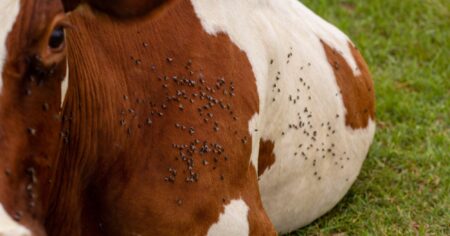By Brooklyn Draisey
A study by Iowa State University (ISU) researchers shows the viability of using bio-oils to plug abandoned oil wells, an application that could drive economic growth for Iowans with farm and forest waste.
ISU mechanical engineering professor Mark Mba-Wright led a “techno-economic assessment” of technology that uses oil created from plant waste to fill orphan oil wells, or abandoned wells that need to be filled in, and sequester carbon dioxide.
Mba-Wright, who has studied bio-oils and their applications for more than a decade, said he was surprised to learn about this use of the materials when the carbon removal company Charm Industrial reached out about conducting the study. The fossil fuel and biofuel industries aren’t usually mentioned in connection with one another, he said.
“We’ve collaborated before, but this was certainly a novel application that we hadn’t considered before,” Mba-Wright said.
Bio-oils are created through a process called pyrolysis, Mba-Wright said, where plant debris is burned quickly at very high temperatures, producing both oil and biochar, a solid byproduct. Bio-oils are most commonly blended with crude oil to make cleaner gasoline and diesel. But recently, Mba-Wright said researchers have started looking to include bio-oils in chemical cement mixtures.
Charm Industrial has already started using bio-oils to fill wells, Mba-Wright said, but reached out to the ISU professor to analyze the prospects of creating mobile units the would gather and process biomass, then transport the oil to a central hub before it is injected into a well. The mobile pyrolysis units would be around the size of a combine and sit behind farm equipment to collect leftovers from harvest.
“They have units in operation and contracts in place, but they wanted to understand what is the long-term potential of making these on-site, small-scale pyrolysis units,” Mba-Wright said. “And so we have process models and financial models that can evaluate some of the configurations that we’re interested in.”
A proposed plan included in the study would involve at least 200 mobile units, according to the report, each with a processing capacity of 10 tons a day. At that capacity, and with the units using debris from corn harvests, also known as corn stover, the study stated 5.3 tons of bio-oil and 2.5 tons of biochar would be created per day.
These units would cost between $1-$2 million to build, Mba-Wright said, and the study stated bio-oil would need to reach a minimum base selling price of at least $175 per ton. Capital costs would decrease over time as more units are made, according to the study, and the plan stacks up in terms of cost and productivity against other methods of carbon sequestration, like direct air capture.
The study stated there were more than 123,000 documented orphaned oil and gas wells in the U.S., but there could be between 310,000 and 800,000 undocumented wells that have been abandoned.
“Iowa State’s experts showed that bio-oil sequestration using corn stover can deliver a high-value, durable carbon removal product that outcompetes other technologies, while providing new markets for crop residues and delivering new economic value to the rural economy,” said Charm Industrial co-founder and CEO Peter Reinhardt in an ISU news release. “As the carbon-removal sector grows, Charm is grateful to work with farm and forest communities to grow this opportunity.”
Mba-Wright said the research team and company are having “ongoing conversations” about further research into pyrolysis and bio-oil through the ISU Bioeconomy Institute, a university center focused on using biomass and other renewable resources for economic and social development.
In addition to trapping carbon that would have otherwise entered the atmosphere and plugging oil wells — which also leak emissions and can pose safety hazards — Mba-Wright said this use of biowaste could bring revenue and opportunities for new practices to Iowa farmers.
Corn stover is generally left to decay in the field, but Mba-Wright said farmers could earn money by letting the debris get picked up and turned into bio-oil. The biochar byproduct created through pyrolysis could go back to the farmer to be mixed in their soil. Mba-Wright said this could lower fertilizer costs and increase land values, but he said the team did not focus on these avenues in their recent work.
“It certainly adds value to a resource that’s underutilized in most fields,” Mba-Wright said.
Iowa Capital Dispatch is part of States Newsroom, a network of news bureaus supported by grants and a coalition of donors as a 501c(3) public charity. Iowa Capital Dispatch maintains editorial independence. Contact Editor Kathie Obradovich for questions: [email protected]. Follow Iowa Capital Dispatch on Facebook and Twitter.


:max_bytes(150000):strip_icc()/28533ripesoybeans_soybeans-01d6026d90324818a2c9daf57e26b0cd.jpg)

:max_bytes(150000):strip_icc()/WinterWheat_December_alternative_seed_crops-a2b0b12da4c04eb282dff7e87688e815.jpg)


:max_bytes(150000):strip_icc()/2210-08-096_wheat-f2aff7062b69433ab8ef6361993a9436.jpg)

:max_bytes(150000):strip_icc()/stockyard-Dodge-City-2048x1536-38bcd3b2f08648cfa8aa180ac360fd5c.jpg)
:max_bytes(150000):strip_icc()/49035871198_32f490cc96_o-2dbf8dbc3ee749898c1ad90bb6214cb3.jpg)
